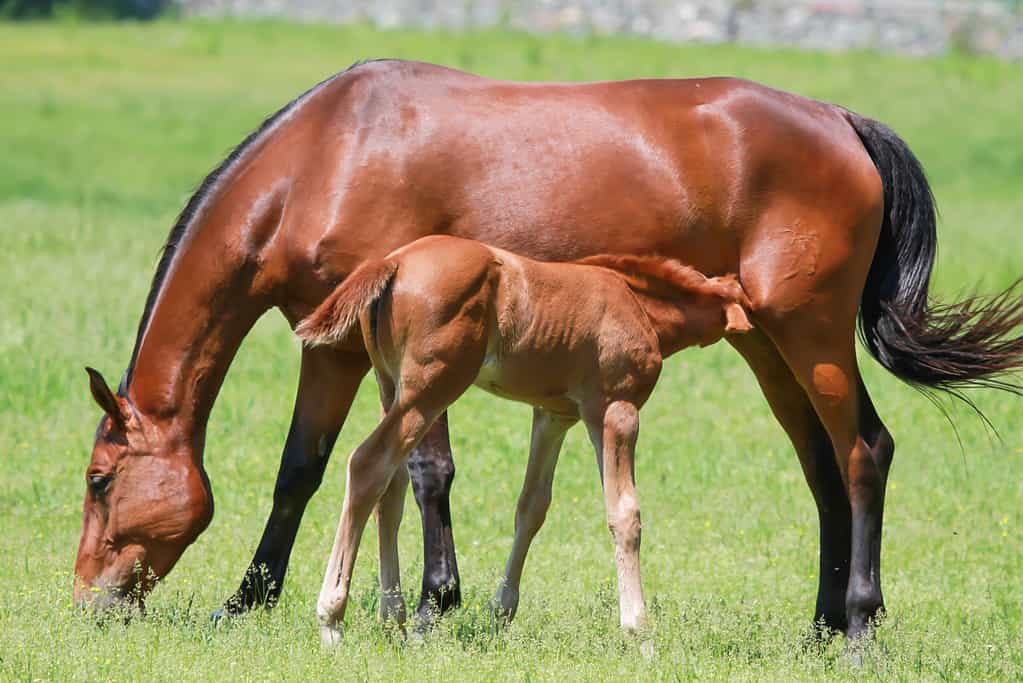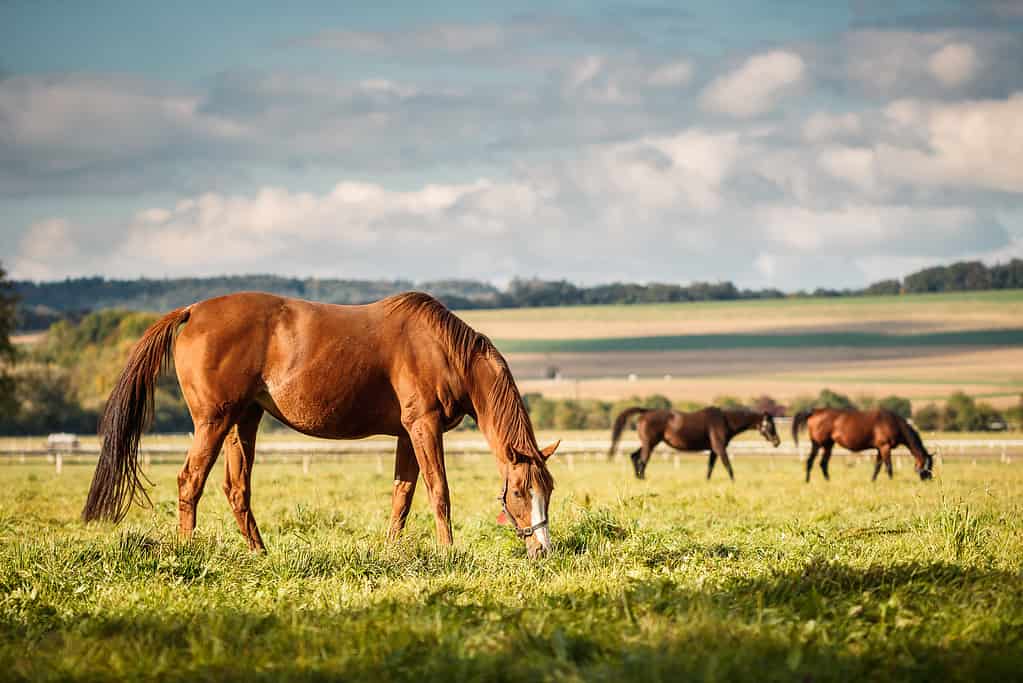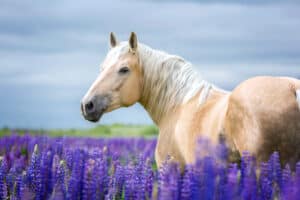For centuries horses have worked alongside us, whether it’s herding cattle, plowing the fields, or as a mode of transportation. They compete in a wide range of activities and bring us no end of enjoyment. They are majestic animals and have incredible power, but have you ever wondered when they are actually mature? Read on to discover when horses stop growing and which are the important milestones in their development!
The Key Stages of Horse Development
Horses are relatively slow to develop and despite growing quickly in height, it takes some time for their bones to develop completely. Let’s take a quick look at the key stages below before we explain them in more detail.
| Age | Height and Weight | Bone Development |
|---|---|---|
| Six Months | Approximately 84% of adult height and 46% of adult weight. | Most bones are still growing but pasterns are fully developed and growth plates close. |
| One Year | Approximately 94% of adult height and 65% of adult weight. | Cannon bones are fully developed. |
| Two Years | Approximately 97% of adult height and 90% of adult weight. | Hocks and knees finish developing. |
| Three to Four Years | Close to full adult height, still a little behind on weight. | Upper leg bones, femur, and shoulders and fully developed. |
| Five to Six Years | Full adult height and weight is achieved in most breeds. | Neck and vertebrae finish developing. |
Six Months

Horses grow rapidly during their first six months.
©Cavan-Images/Shutterstock.com
The first stage of a horse’s development occurs in the six months following their birth. During this period foals grow rapidly and most breeds achieve around 84% of their adult height by the time they are six months old.
They will also develop their first set of teeth — known as “milk teeth” — during this early stage. The first teeth appear at around two weeks of age, and the entire set is present by the time they are nine months old. Horses are typically weaned from their mothers between the ages of six months and one year, but they are still very immature both physically and mentally.
One Year
By the time a horse is one year old it should reach approximately 94% of its final adult height. However, horses at this age are still in the “gangly” growth phase. As a result, their body weight doesn’t match up to their height, with most breeds weighing only 65% of their expected mature weight when they are one year old. This typically means that they still have a slender appearance, despite being almost at adult height.
However, this period is also an important one for the development of the bones. When it comes to the development of a horse’s bones, it’s actually the bones the farthest away from the body that are fully grown first. The growth plates of the lower legs begin to close, meaning that the bones have reached their final adult length. This change typically begins with the pastern, which has finished its growth at around six months, and the cannon bone, which is usually complete at approximately 12 months. It’s important not to put any undue pressure on the leg bones while they are still growing as it can cause confirmation problems which can affect the horse later in life.
Two Years

Horses are close to their adult height by the time they are two years old, although their bones are not fully developed.
©Zbynek Pospisil/iStock via Getty Images
Between the ages of one and two, horses begin to develop into their adult bodies. They are almost at their full adult height, and they begin to develop muscle mass so their body weight increases. Their bones also continue to grow and reach their final size, with the hocks and knees being the next areas to finish growing.
The age of two is also an important time for the horse’s teeth, as at this point horses begin to develop their second set of teeth which are their adult teeth. The adult teeth usually begin to appear when the horse is two years old, pushing the milk teeth up and out. However, horses don’t get their adult teeth all at once; instead, it occurs gradually between the ages of two and five.
Three to Four Years
Once horses reach three years old they are close to their adult height and weight. However, some may still go through “growth spurts” whereby they grow taller but it takes a little longer for the rest of the body to fill out accordingly. The growth plates of the upper leg bones eventually close in this period, and by the time the horse reaches four years old, the shoulders and the femur are also complete.
Horses are also more mentally mature once they reach this age and are more willing to listen to aids. Many horses have often begun training at this age in preparation for activities such as riding or driving. However, it’s important to remember that just because they look as though they are fully grown, the rest of their bones are not yet complete and the horse is still not fully developed. This is because bones that are not yet fully developed are at a greater risk of incurring injuries such as stress fractures.
Five to Six Years

Most horses are fully grown by the time they are six years old.
©Dan Baillie/Shutterstock.com
For most horses, the final milestone is achieved between the ages of five and six — when they are fully grown and mature. The final adult height is achieved, and their body weight should also now be appropriate for their size. Despite this, some heavier breeds may take a little longer to develop and can continue to grow until around the age of seven.
Incredibly, the last part of the horse’s skeleton that completes the growth stage is the vertebrae, with this occurring at approximately six years old. Although many horses are trained and ridden at a young age, more and more owners are now leaving their horses until a later age before riding them. This is to allow the horses back to fully develop and to minimize the risk of associated health problems later in life.
The photo featured at the top of this post is © Kwadrat/Shutterstock.com
Thank you for reading! Have some feedback for us? Contact the AZ Animals editorial team.






